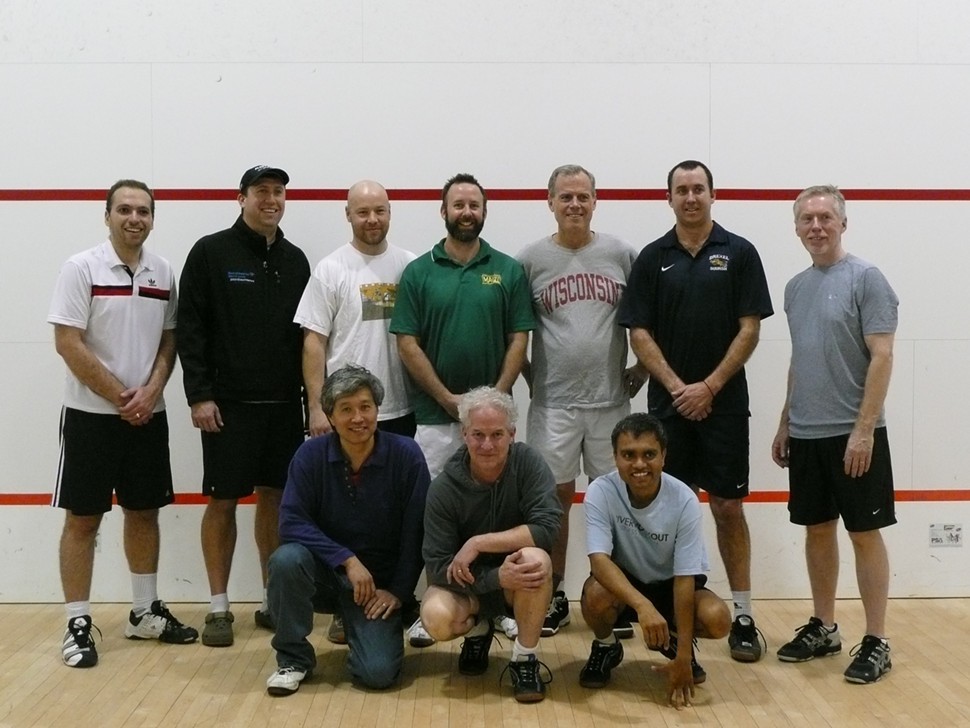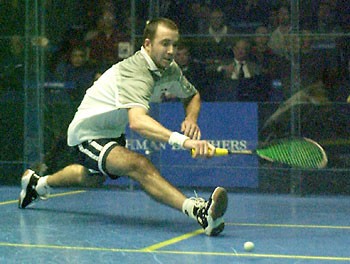Baseball fans have their fantasy camps where they pay big bucks to put on uniforms and spikes and play a few innings with Hall of Famers. Golfers have their 18-hole pro-ams. Tennis pros have hit-and-giggle exhibitions with club players. And “Dancing With the Stars” has retired jocks like Martina Navratilova and Warren Sapp learning new moves.
There are adult camps for almost every sport including squash, an indoor court sport that combines the athleticism of tennis with the power of racquetball, the stamina of marathon running, and the grace of dancing. Last week, Memphis squash players decided that rather than go to camp, we would bring the pro to us. With a key assist from Ted Gross, publisher of the Daily Squash Report, the pro we decided on was John White, ranked #1 in the world in 2004, and now coaching at Drexel University in Philadelphia.
It’s a small sport but it’s a big world. Squash is mainly played in private clubs and universities in the Northeastern United States but has much broader appeal in Australia, the United Kingdom, Canada, and the Middle East. When we went shopping for a pro, we wanted the best one we could afford. At 38, White is younger than Shaquille O’Neal, Brett Favre, and Andre Agassi and the same age as Derek Jeter. Some of the pros he used to beat are still on the tour.
When he was on the tour, White was known as the hardest hitter ever. He would go for ridiculous shots, dive for balls, give away a few easy points, cuss once in a while, smash an occasional racquet, and laugh about it afterwards. As White’s contemporary Jonathan Power said of him, “You can’t bet on John but you can’t bet against him either.” Now he’s a husband and parent of four kids worried about making the baseball or track team. In other words, he is, in some ways, just like us.
Most important, he seemed like a guy who would drink some beer, get on the court and give us some pointers, put on a show, and encourage the fantasy that, despite our physical limitations and our advancing years, we could still achieve a higher level of mediocrity. We had seen White on DVD’s and YouTube clips but never in person. As one of our players said to him while we were watching one of his matches on a DVD, “You look like you don’t give a shit.” It was meant as a compliment about White’s refusal to play a mechanical game, and that is exactly how it was taken. It so happened that White lost both of the matches we watched that night, and someone said “Are there any DVDs of matches you won?” He laughed, raised a beer, and we knew we had our man.
And for two days on the squash courts at Rhodes College and in post-workout dinners, he gave us our money’s worth. Our ranks included three doctors, three professors, a barbecue restaurant manager, a journalist, two businessmen, and a doctoral student. Our ages range from 30 to 62. All of us have been playing at least eight years and most of us get on the court three or four times a week when not injured.
He played a couple of games with each of us and managed to invent ways to “lose” a few points while also giving us a taste of what a ball going 150 miles an hour on a court 32 feet long and 21 feet wide looks like. He put us through conditioning drills that left us winded and sore the next day. He played our best player, Egyptian Mohamad Elmeliegy, and made him look as outclassed as most of the rest of us are when we play Mohamad, a 30-year-old with several years of professional training.
It was a reminder that world-class athletes are not like the rest of us, or even like good college athletes. John paid Mohamad the compliment of playing hard and pushing him to the limit. He retrieved balls in the corners with ease, rarely taking more than three steps. On the rare times when a ball got past him, he simply turned, flicked his wrist, and slammed it off the back wall while he reclaimed his position at center court as the ball floated to the front wall. His movement, perfected by tens of thousands of hours of practice since he was a young teenager in Brisbane, Australia, was flawless and effortless. Honestly, it was more like “Dancing With the Stars” than sport.
In our strategy and beer-drinking sessions (minimal difference), he opined on racquets (more alike than different), shoes (still likes Prince NFS), American squash pros (unlikely to crack the top 25), balls (under some conditions, pros hit them so hard they expand to almost 150 percent of their original size and bounce like tennis balls), Egyptian dominance (take the ball early), Aussie decline (his hometown once boasted 200 court complexes but now has a dozen or two), squash getting into the Olympics (unlikely unless the host country grants a wild card), sportsmanship (he once saw a player disqualified in the warm-up for not hitting the ball to his opponent often enough), college recruiting (go international), the legendary Jahangir Khan (a near-supernatural ability to know where his opponent was going to hit the ball), and Trinity College Coach Paul Assainte and his team’s 252-match win streak which was broken this year by Yale (class guy and team).
And, of course, those pointers. Most of which I have already forgotten, which is probably of little consequence. The one I do remember came when I asked if a senior player was going to try to improve one thing, should it be strength, flexibility, fitness, or skills?
He just smiled and pointed at his head.

